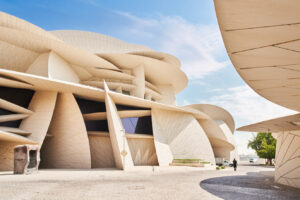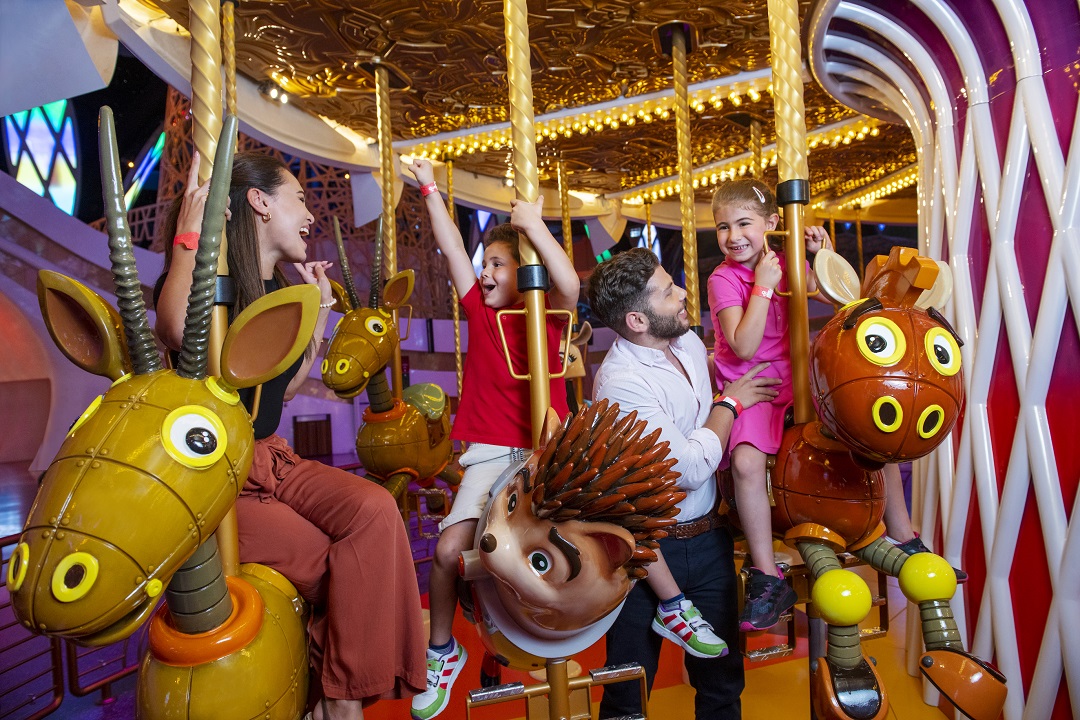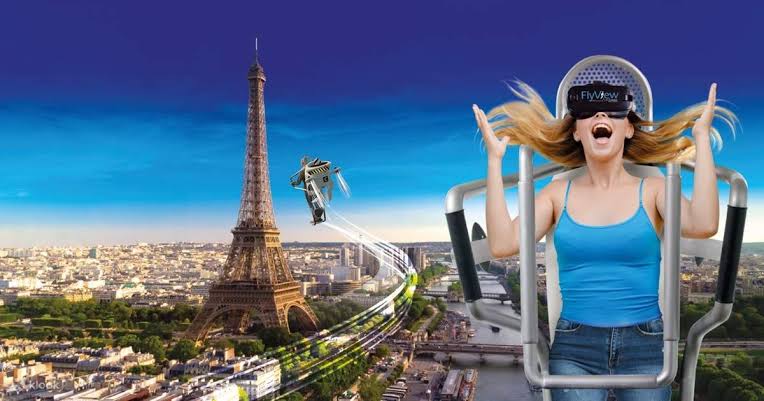The museum houses 11 galleries through which visitors can witness the changing fortunes of this peninsular nation. Each gallery offers perspective, and a multi-sensory experience.
The National Museum of Qatar (NMoQ) is dedicated to the history of Qatar. Symbolically, its architecture evokes the desert, its silent and eternal dimension, but also the spirit of modernity and daring that have come along and shaken up what seemed unshakeable.
A visit to the National Museum, one will find gigantic flying saucers. Designed as a desert rose, the museum structure is pleasing to the eye. Besides the museum, the building itself is an architectural marvel. And also reflects meticulous planning on the design front. The entire journey (inside the museum) is immersive and at the same time experiential which tells the story of Qatar and its people from earliest times to today. Visiting the museum one will easily understand the peninsula’s natural history, its rich heritage and culture.
Designed by Pritzker Prize-winning architect Jean Nouvel, the National Museum of Qatar draws inspiration from and recreates the desert rose, a naturally occurring mineral crystal formations occurring solely in arid coastal regions. The desert rose is a natural architectural structure, created through the interaction of wind, sea spray and sand over millennia.
Built around Sheikh Abdullah bin Jassim Al-Thani’s original palace, and the seat of government for 25 years, the National Museum of Qatar gives voice to Qatar’s heritage whilst celebrating its future. It spans across a whopping 430,500 square feet and offers a visual tour of Qatar’s early civilization and the formation of its cities. NMoQ charts the country’s history and progress through the centuries. Exhibitions combine historic objects and contemporary influences, narrating a story and impact of the rapid change.

It is home to a multitude of archaeological and heritage objects, manuscripts, photographs, jewellery, and costumes. These objects bring to life the story not only of Qatar, but also the region. Anchoring the collection is the pearl carpet of Baroda, commissioned by the Maharajah of Baroda, India in 1865. It comprises over 1.5 million pearls, as well as diamonds, rubies, emeralds, and sapphires set in gold and woven onto a base of silk and fine deer hide and illustrates how widely used gemstones were in the region.
The museum houses 11 galleries through which visitors can witness the changing fortunes of this peninsular nation. Each gallery offers perspective, and a multi-sensory experience. These are auditory through sound, such as music and oral histories, visual, through film and archival images, olfactory, with aromas evoking particular times and places. The museum complex includes permanent and temporary galleries, a 220-seat auditorium, two cafés, a restaurant, a gift shop, separate facilities for school groups and VIPs, heritage research centres, conservation laboratories and museum collection storage. No wonder, it also has support facilities like toilets for visitors and staff, baby-change facilities, prayer rooms, support-staff offices etc.
To be more candid, it’s an engaging journey—every point of contact is unique, so one cannot anticipate what he or she will encounter next; the path contracts into narrow canyons and then bursts into expansive rooms, carrying everyone along in its current. The museum attempts to communicate the essence of a culture through archaeological finds, animal models, and cultural artifacts.
The National Museum is dedicated to the history of Qatar. Symbolically, its architecture evokes the desert, its silent and eternal dimension, but also the spirit of modernity and daring that have come along and shaken up what seemed unshakeable.
- (Highlights)
Spans 430,500 square feet
Houses 11 galleries
Have permanent and temporary galleries
A 220-seat auditorium
Separate facilities for school groups and VIPs
Houses the pearl carpet of Baroda
The NMoQ is easily accessible via car or a taxi (Uber is widely used, alternatively Karwa or Careem). The distance from Hamad International Airport is approximately 15 minutes. The nearest metro station is the National Museum, Gold line.






